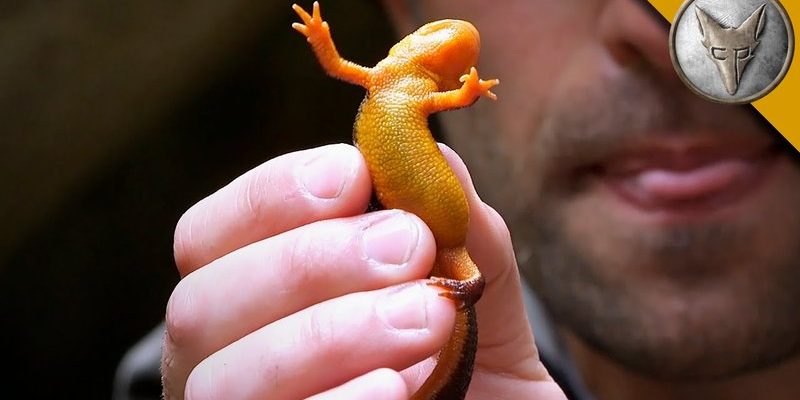
Imagine walking by a serene pond, watching newts glide gracefully through the water. Their bright skin might catch your eye, and you might want to reach out and touch one. But before you do, let’s take a moment to understand what makes newts special and whether they could be harmful to you or your loved ones. Spoiler alert: many people don’t know that newts produce toxins, and that’s where the story gets interesting.
What Are Newts?
Newts are amphibians that belong to the family Salamandridae. They are closely related to salamanders but have distinct features, such as a more slender body and a somewhat warty skin texture. Found in various habitats across North America, Europe, and Asia, they prefer moist environments like ponds, marshes, and forests.
In terms of appearance, newts often have vibrant colorations, which can range from olive green to bright orange. These colors serve a purpose—they’re a warning to predators about their toxicity. Newts undergo a fascinating life cycle that includes an aquatic larval stage and a terrestrial adult stage, giving them a unique set of adaptations based on their environment.
Newts and Their Toxins
You might be wondering, how do newts actually defend themselves? Well, they have a fancy trick up their sleeves: toxins. Many newt species produce a type of toxin called tetrodotoxin, which can be found in their skin and glands. This potent neurotoxin serves as a defense mechanism against predators. When threatened, a newt can secrete this toxin, making them unappetizing or even dangerous to those who might consider them as a snack.
Tetrodotoxin is powerful—it can lead to serious health issues in mammals, including humans, if ingested or if it enters the bloodstream through cuts or abrasions. However, the odds of a healthy person coming to harm simply from touching a newt are quite low, as the toxin primarily affects the nervous system and usually requires direct ingestion of the skin or internal contact to have severe effects.
Can Newts Harm Humans?
Now, let’s get to the crux of the question: can newts really be dangerous to humans? The short answer is yes, but it’s a bit nuanced. While newts do produce toxins, serious harm to humans is rare. Most interactions with newts don’t pose a significant risk if you follow some basic precautions.
If you handle a newt, it’s wise to wash your hands afterward. Ingesting even a small amount of the toxin by accident can lead to symptoms like nausea, vomiting, or numbness. In severe cases, it could lead to more serious health complications, but these are generally associated with ingesting large quantities. Still, it’s always better to be safe than sorry, right?
Signs of Toxic Reaction
If you do encounter an unpleasant reaction after touching or handling a newt, it’s essential to recognize the signs. Here’s what to watch for:
- Skin Irritation: Redness or rash may occur at the site of contact.
- Nausea: An upset stomach or vomiting can indicate a reaction.
- Numbness: A tingling sensation around the lips or mouth is a common effect.
- Breathing Difficulty: This is a more severe reaction and requires immediate medical attention.
If you notice any of these symptoms, it’s best to consult a healthcare professional for advice. Most importantly, don’t panic—serious reactions are quite rare.
What To Do If You’re Bitten or Exposed
If you happen to get bitten by a newt (which is quite rare), or if you suspect you’ve come into contact with its toxins, here’s what you should do:
1. Wash Your Hands: Rinse your hands and any exposed skin with soap and water immediately. This is crucial to remove any toxins.
2. Avoid Touching Your Face: It’s natural, but try not to touch your eyes or mouth after handling a newt until you’ve washed up.
3. Monitor Symptoms: Keep an eye on yourself for any signs of a reaction as mentioned earlier, and take note of any changes.
4. Seek Medical Help: If symptoms develop or if you’re unsure about your exposure, it’s always best to err on the side of caution and consult a healthcare provider.
Newts in the Ecosystem
While we’ve established that newts can be a bit risky, it’s also important to appreciate their role in the ecosystem. Newts play a vital part in controlling insect populations and serve as food for various predators, such as birds and larger mammals. Their presence indicates a healthy pond ecosystem, making them valuable partners in nature.
Rather than seeing newts solely as potential dangers, think of them as integral components of their environments. If we can co-exist safely with these fascinating creatures, we can appreciate their beauty and the benefits they bring to our ecosystems.
Final Thoughts on Newts
So, can newts be dangerous to humans? Yes, they have the potential to cause harm through their toxins, but with a little knowledge and caution, you can safely enjoy observing these remarkable creatures without putting yourself at risk.
Whether you’re hiking by a pond or just curious about these colorful amphibians, remember to appreciate them from a distance. They might be small, but newts are wonderful examples of nature’s complexity—and they remind us that even the most innocent-looking critters can have hidden depths. So next time you spot a newt, you can admire it with a little extra respect and a dash of caution!

